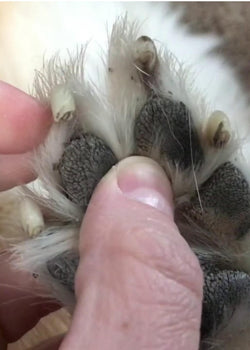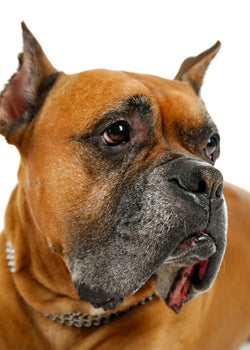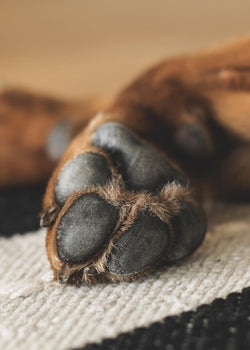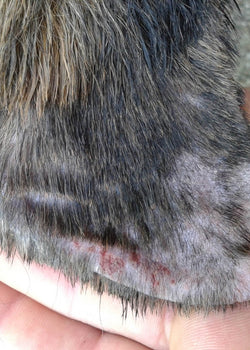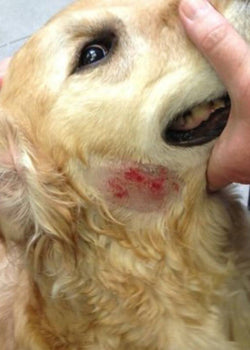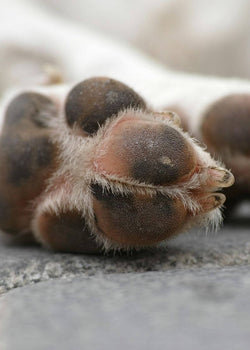Hyperkeratosis dog treatment: how to cure your dog’s nose or paws?
Let’s admit! Owning a dog is not an easy task at all. It’s true that they make our lives better, however, in certain moments you can start feeling helpless by knowing that your pooch suffers from a condition called Hyperkeratosis.
It’s certainly not so thrilling to see a dog’s nose or paws covered with crusts or excessive hair. Besides, it presents an aesthetic condition, hyperkeratosis might develop a number of other health problems.
What is a hyperkeratosis in dogs?
Hyperkeratosis in dogs presents a disease that affects nose and paws. It occurs when a body produces too much keratin. Keratin is a structural protein of everyone’s body and is meritorious for hair production.
Hyperkeratosis is followed by ugly-looking crusts on a dog’s nose and hair on its paw pads. As we all know, dog paw pads are hairless and present the only place where they can sweat.

What are the main symptoms of hyperkeratosis?
PAWS
A healthy dog’s paw pads should have a smooth and shiny texture. However, when they become rugged and start to develop crusts and short hair, it’s time to react!

Other symptoms are a dog’s inability to walk straight, accumulated scar tissue, excessive dryness, and infection of the nails.
NOSE
Dogs’ noses are their main tools for exploring the world. The nose skin should stay wet and smooth so a pooch could pick up the smelled scents. When the nose becomes affected by hyperkeratosis, it becomes dry, cracked and develops crusts and blisters.
Why does hyperkeratosis occur in dogs?
GENES
The exact reason for this type of condition is still undetermined. However, there are dog breeds that are more prone to developing because it has been inherited through genes. Some of the breeds that have a higher tendency to suffer from this condition are bully breeds, Labrador Retriever, and Golden Retriever.
PARASITE
Another reason for the occurrence of hyperkeratosis may be the parasite called Leishmaniasis. This parasite is usually transmitted by sandflies. One sandfly can infect 9 of 10 dogs.
CANINE DISTEMPER
This kind of disease is the trigger for a dog’s hyperkeratosis. It’s the type of Morbili virus that affects unvaccinated puppies. Unfortunately, canine distemper can’t be treated. It’s equal to measles in people however, in dog’s case, it’s followed by hyperkeratosis as well.
AUTOIMMUNE DISORDER
When the cells of a dog’s immune system attack its own cells, the skin becomes thin and develop blisters. This kind of blisters are very painful, so that’s why is advisable to perform a biopsy to determine the root of the problem.
EATING FOOD POOR WITH ZINC
Zinc is one of the most important chemical elements of everyone’s body. It’s worthy not only for human’s but also for a dog’s skin. Therefore, it’s very important to feed your furry friend with food rich in Zinc. Zinc strengthens the skin and keeps it healthy and young.
How to treat a hyperkeratosis in dogs?
It’s highly advisable to take your dog to the vet from the first spotted symptoms of hyperkeratosis. Although it might sound easy to solve, crusts may grow into a problem and develop an infection. A cracked skin where a crust has just fallen off presents the perfect place for bacterial growth. Therefore, your vet should take a detailed examination in order to determine the reason for its occurrence.
Another solution is always preferable since it’s all natural and can’t have any side effects. The good news is that this illness can be prevented by regular soothing your dog’s paw pads and nose skin. Using natural ingredients such as marigold that presents a natural healer, and chamomile, that is famous for its calming effects, will never go wrong.
Flora4Pets Natural Dog Dry Nose & Skin healing oil can be used daily and will help the hyperkeratosis ‘spikes’ to fall off to reveal a healthy and moist nose underneath.
For treating a dog’s paws affected by hyperkeratosis in a natural way, we recommend you using Flora4Pets Skin & Cracked dog paw healing balm. It will help in removing crusts, dry and flaky skin and in healing cuts and wounds as well.

